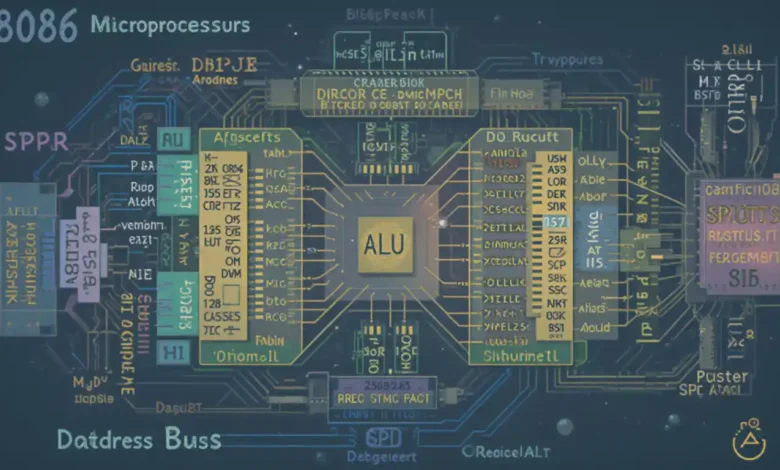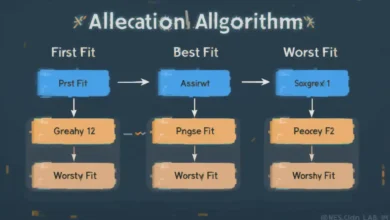Exploring the Architecture of 8086 Microprocessor: A Comprehensive Guide

Introduction
The 8086 microprocessor is a significant piece of technology that paved the way for the modern PC revolution. Developed by Intel in 1978, the architecture of 8086 was designed to provide higher processing speeds and capabilities, which were revolutionary at that time. This post will explore the intricacies of its architecture, highlighting its design, components, and the overall impact on computing.
Historical Context of the 8086 Microprocessor
Understanding the architecture of 8086 begins with its historical backdrop. Developed during a time of rapid technological advancement, the 8086 was Intel’s response to the growing need for more powerful computing in both industrial and personal applications.
Basic Design and Structure
The architecture of 8086 is based on a complex instruction set computing (CISC) model, which allows it to handle a large set of instructions. The processor features a 16-bit structure, which was a significant improvement over its predecessors.
The Bus Interface Unit (BIU)
At the heart of the 8086 microprocessor is the Bus Interface Unit (BIU). This component is responsible for all data and address bus communications between the processor and the memory and input/output devices, underlining the architecture of 8086’s efficiency in managing data flow.
Execution Unit (EU)
Complementing the BIU is the Execution Unit (EU), which executes the instructions fetched by the BIU. The synergy between the BIU and EU is crucial for the efficient performance of the 8086, allowing for faster processing and multitasking.
Register Array
The architecture of 8086 includes a comprehensive register array designed to optimize processing speeds. These registers include general-purpose registers, segment registers, and a pointer and index register set, each playing a pivotal role in the functionality of the microprocessor.
Memory Segmentation
One of the defining features of the architecture of 8086 is its approach to memory segmentation. This method allows for more efficient data management and access, contributing significantly to the flexibility and power of the processor.
Instruction Set
The 8086 microprocessor boasts a rich instruction set, which is a testament to its advanced architecture. This set supports a variety of operations, including arithmetic operations, data handling, and control operations, making it versatile in handling different programming demands.
Interrupts and Signal Operations
Interrupt handling is an essential aspect of the architecture of 8086, facilitating efficient processor responses to various service requests. This feature ensures that the processor can handle multiple operations smoothly by prioritizing tasks.
Direct Memory Access (DMA)
The architecture of 8086 supports Direct Memory Access (DMA), a feature that allows certain hardware subsystems to access main system memory independently of the central processing unit (CPU), enhancing the data processing speed.
Legacy and Impact on Modern Computing
The legacy of the architecture of 8086 is immense. It laid the groundwork for future Intel processors and influenced the development of the x86 architecture, which is still relevant in today’s computing world.
Conclusion
The architecture of 8086 marked a significant leap in computing technology. Its comprehensive design and capabilities not only shaped the future of Intel’s microprocessors but also had a lasting impact on the overall field of computing. Understanding this architecture offers valuable insights into the evolution of microprocessing technology and its role in shaping modern computing.
FAQs
- What is the significance of the 16-bit architecture of 8086?
The 16-bit architecture allowed the 8086 to handle more data simultaneously compared to its 8-bit predecessors, improving processing power and efficiency.
- How does memory segmentation in the 8086 improve performance?
Memory segmentation allows the 8086 to access and manage memory more effectively, enabling faster data retrieval and better utilization of memory.
- What are the main components of the 8086 microprocessor?
The main components include the Bus Interface Unit (BIU), Execution Unit (EU), and a variety of registers, all crucial for the processor’s operations.
- How did the architecture of 8086 influence modern computing?
The architecture of 8086 laid the foundational design for the x86 architecture that is still prevalent in most modern PCs, influencing software and hardware development across the industry.
- Can the 8086 microprocessor still be used in modern applications?
While outdated for modern standards, the 8086 microprocessor can still be used for educational purposes or in specific legacy applications where low processing power is sufficient.




